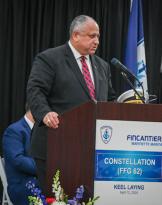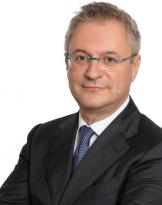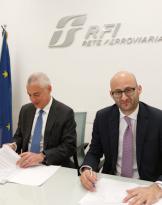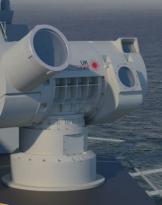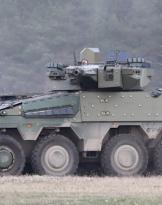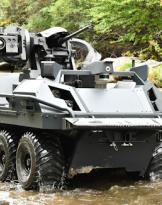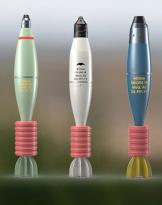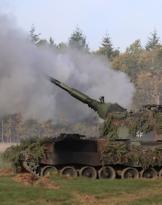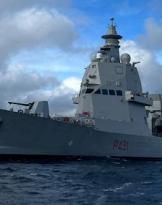At first glance, the MT Propeller headquarters, located on the edge of the small airport of Straubing-Wallmuehle in the verdant Bavarian town of Atting, gives a special glance from the first floor of the building where the general management and engineering reside . Yes, because the entire corridor that on the right runs alongside offices and meeting rooms, on the left overlooks the assembly workshop on the ground floor. Bright, impeccably tidy and quite attractive with aircraft propellers having undergone the latest assembly and testing operations.
An environment that, from the first moment, conveys the idea that you are not alone in front of a typical, efficient German company: it presses much more. This impression is confirmed, in fact, as soon as the history of the company itself is known: founded in 1981 by the pioneer Gerd Muehlbauer, aviator and expert builder and maintenance engineer of all types of propellers, at the time it employed 6 people and was housed in a single building .
Today, MT Propeller is the first European company to design and build 2 to 5 blade propellers (but was the first to successfully produce and test 7 or 9 blade propellers) and is the second in the world. It employs a total of 220 people and has over 25 propeller systems, with about 280 different models of blades (FAA and EASA certified), operating in flight on the most diverse types of aircraft but also of hovercraft.
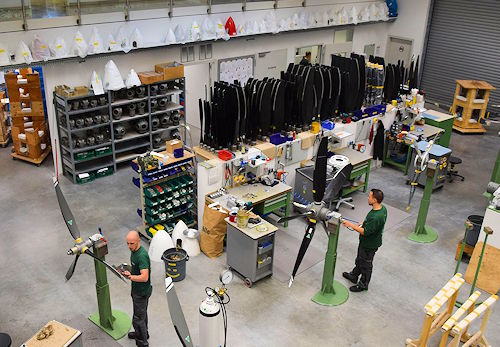 That first building now houses the fascinating headquarters and over the years another four buildings have been added in which production, service and maintenance, logistics and research take place, while a sixth is currently under construction. In addition, the company is now organized into three business divisions, in 1999 it acquired Avia Propeller, a Czech manufacturer that is headquartered right in front of GE Aviation Czech (where the assembly and testing of the GE Catalyst takes place), and has a headquarters for the service also to DeLand in Florida (USA).
That first building now houses the fascinating headquarters and over the years another four buildings have been added in which production, service and maintenance, logistics and research take place, while a sixth is currently under construction. In addition, the company is now organized into three business divisions, in 1999 it acquired Avia Propeller, a Czech manufacturer that is headquartered right in front of GE Aviation Czech (where the assembly and testing of the GE Catalyst takes place), and has a headquarters for the service also to DeLand in Florida (USA).
The dynamism of MT Propeller is perfectly personified in its Vice President and General Manager, Martin Albrecht. A graduate in mechanical engineering, Albrecht has always been passionate about aviation, has an experimental pilot and a civil pilot license, was six times national champion in aerobatic flight and has built three two-seater aircraft independently. "In the company we have three test pilots who are three designers of our engineering" he says proudly introducing Tina, an aeronautical engineer and experimental pilot who designs propellers.
"We study all aspects of the propeller: the materials, the wear to which it is subjected with the blades, their shape and size in order to improve and evolve the product from time to time" he explains, brandishing a huge blade of a hovercraft, are the largest propellers of 3.5 meters in diameter. "A little over ten years ago, when I started, we produced about 750 blades a year, today we build about 6500, thirty a day".
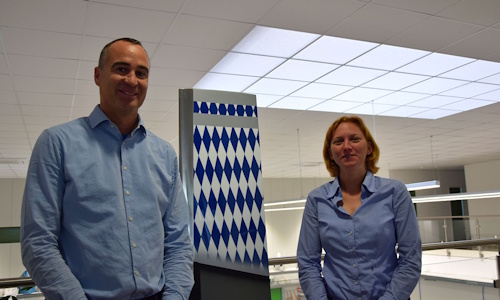 At the heart of the philosophy and success of Albrecht and his team is a total devotion to the engineering and design of these objects, which fits perfectly with the unique production process, because it combines the craftsmanship of the the first component that made flight for man possible (the propeller) with technological innovation. “Our propellers all have a wooden core, but they are capable of better performance than metal ones: for example, one of our 5 blade propellers weighs like an 3 metal one, but reduces vibration and noise from 30 to 50% " says Albrecth. "It depends on the number of blades and how the weight is distributed in them, we tend to concentrate it more on the base, the one that attaches to the hub", in MT Propeller the complete propeller system is produced, with the hub (ie the central hub, available in 34 models and made from forged aluminum), its interior, the central cone and the control systems
At the heart of the philosophy and success of Albrecht and his team is a total devotion to the engineering and design of these objects, which fits perfectly with the unique production process, because it combines the craftsmanship of the the first component that made flight for man possible (the propeller) with technological innovation. “Our propellers all have a wooden core, but they are capable of better performance than metal ones: for example, one of our 5 blade propellers weighs like an 3 metal one, but reduces vibration and noise from 30 to 50% " says Albrecth. "It depends on the number of blades and how the weight is distributed in them, we tend to concentrate it more on the base, the one that attaches to the hub", in MT Propeller the complete propeller system is produced, with the hub (ie the central hub, available in 34 models and made from forged aluminum), its interior, the central cone and the control systems
The MT Propeller production process is the next spectacle to be seen in this corner of Bavaria. Upon entering the production building, one immediately has the impression of being in one of those Scandinavian wood factories, where beautifully designed furniture items take shape. Perhaps because the high ceilings, the smell of lumber and the cottage-like shapes of the building influence, but in there come batches of beech and fir wood which are prepared in boards ready to be carved like shovels, passing first to check inside machines. magnetic resonance imaging, identical to those of hospitals.

The MT Propeller blades are therefore made of natural composite material, the beech wood is at the base fortified by the fir with which it is joined, dark veins can be observed that rise and become thinner along the rest of the very light colored wooden surface. This material core of the propeller, through subsequent processes and processes, is coated with carbon fibers or composite materials, fortified by aluminum for aerospace applications and edged with Nickel Cobalt. The result is 5 times stronger than aluminum and 2 times stronger than steel.
"The combination of design and materials is the formula that makes our propellers particularly efficient in terms of noise emissions and vibration containment" says Albrecht. "We love working with OEMs (Original Equipment Manufacturers, aircraft and engine manufacturers), but for 50% our customers are private individuals who fly and request our systems on their aircraft". The reference market of MT Propeller is in fact the one called Business & General Aviation. And this attention and direct relationship with the customer is evidenced by an area of the company website, which hosts a sort of open forum in which customers from all over the world send feedback, comments on products and share experiences.
Finally, Albrecht says he is very happy with the collaboration agreement signed with Avio Aero to equip the non-US military applications of the new engine with a completely European passport with Bavarian propellers: in the coming months, in fact, the first test campaigns could start at the ultramodern plant in Brindisi or in the brand new test rooms in the Czech Republic.
"We expect the propeller of the innovative GE Catalyst turboprop to 5 blades, but depending on the requirements of power, quietness, speed and altitude we could also think of an 7 blade propeller" says Albrecht. "In the 2016, we tested a propeller at 7 blades confirming performance and quietness similar to those experienced when flying a jet, so we called this product Unducted Prop Fan!".


